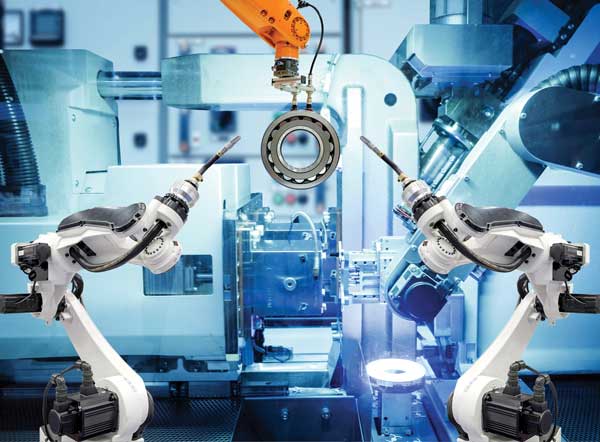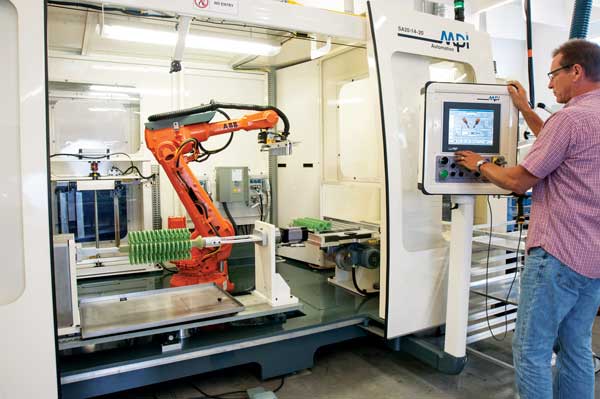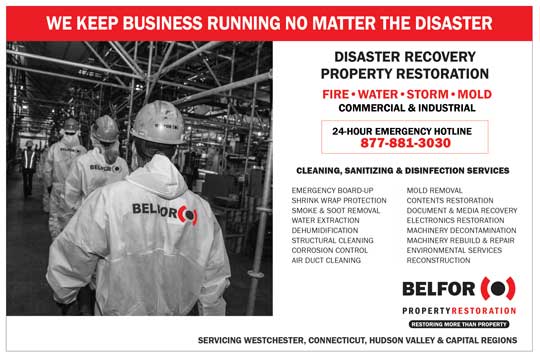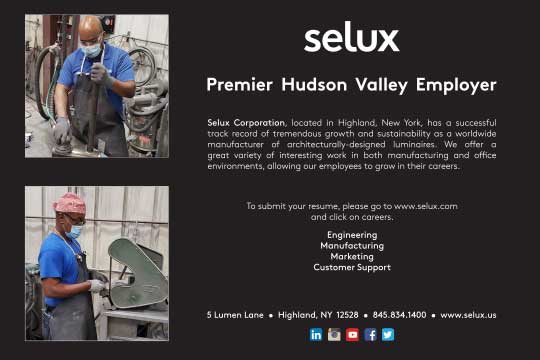PAST, PRESENT AND FUTURE
by Taylor Dowd
EVOLUTIONIZING AUTOMATION
As technology continues to expand and become more widely used in manufacturing, automation is at the forefront of shifting production across the U.S. Put simply, automation means using control systems and equipment to conduct production processes with minimal human intervention. Today, automation has become more widespread than ever and one thing is clear: it is here to stay.
AUTOMATION: A HISTORY
Some of the first recorded uses of automation in machinery date back to the 11th century when miners drained underwater tunnels using waterwheels. The Industrial Revolution indicated the beginning of modern automation, as automated tools and production processes increased productivity. In the 1920s, the introduction of electricity quickened factory floor production. Feedback controllers used across the industry were a pivotal step taken in the 1930s-1940s.

The term automation, which referred to the automatic handling of metalworking in factories, was coined by Ford Motor Company in the 1940s, according to Britannica. World War II sparked a race for development to increase output and meet high demand for supplies, according to the Robotics Industries Association. Several decades later, during the ‘80s and early ‘90s, American companies began investing more in automation. After seeing the efficiency of competing Japanese auto manufacturers, General Motors first invested in robotics and automation in the ‘80s. Automatic processes allowed companies to focus on niche applications. Business-owners realized machines would be more effective and less costly than paying laborers to complete work. Manufacturing was one of many sectors that introduced automation. Retail, pharmaceutical, and consumer goods industries also adapted automation technology to improve production, according to Sasken. In the late ‘90s, automation systems saw a decline in deployment, but eventually rebounded with advanced innovative technology.
THE RISE
Industrial robots play a significant role in the increase of automation systems. In 2017, the International Federation of Robots (IFR) reported a 30% increase in annual robot sales. Over 381,000 robots were sold to production industries. An IFR report predicts there will be nearly 4 million robots at work in the manufacturing industry by the end of 2021. Every new development in automation provides better jobs and opportunities for companies, allowing U.S. manufacturers to compete with other nations, including China. More companies have begun investing in automation to gain an edge over competitors and adapt to a new production system. In the past several years, automation has seen some of its greatest developments. Now more than ever, both smaller and larger companies are implementing automated systems.

BETTER JOB OPPORTUNITIES
As automation and robots become more common in the workplace, some voice concern over the consequences for laborers who may lose jobs to machines. However, Marty McGill, Vice President of Allendale Machinery, says automation does not simply eliminate jobs: it transforms the duties of the roles and creates better opportunities for employees. “Anywhere you can bring automation into a facility is going to make your job easier and more profitable,” he says. “Automation provides better paying jobs with more benefits and opportunities.” McGill makes clear automation does not mean manufacturing employees will not be out of work; rather, he suggests the requirements of roles will gradually shift. Allendale Machinery provides industry-leading technology, tooling, engineering and automation expertise to its clients. McGill says clients are able to create more parts for less money by using automation. “It can be as simple as adding a bar feeder to a lathe, using multi-station vises on a mill, fixturing to process more parts per cycle, or add rotary tables to eliminate the multiple handling of parts,” he says.
Sean Hamilton, Director of Operations at Putnam Precision Products, Inc., voices a similar sentiment: “We are reducing turnover as employees are embracing the growth opportunities that innovation always provides. No longer bored by the tedium of machine tending, workers are embracing the growth opportunities that automation affords.” Putnam Precision is a leading full service contract manufacturer serving the medical, computer, and aerospace industries. Hamilton, who has been with the company since the late 70s, says automation has always played a role in the history of manufacturing. “We are always innovating and embracing the next degree of automation,” he says. One change from automation Hamilton has noticed is a decrease in need for machine tending: the robots simply take care of it themselves. Instead, he sees an increasing need for people who design for manufacturability and know how to keep the robots and machines running. Automating with robots leads to consistent quality, more efficient work, and increased production in a safer work environment. “Robotic machine tending is a continuation of the long history of innovation that drives productivity, precision and accuracy to the world market in which we compete,” he says.

A CHANGING WORKFORCE
Automation undoubtedly changes the ways in which a company operates. The pressure is on for companies to remain competitive and find employees who can take on the changing responsibilities in an automatic production space. Aaron Phipps, Vice President of Manufacturing & Engineering at MPI Systems, has seen automation developing at his company since he began working over 15 years ago, though he says it has become most mainstream within the past two years. “At this point if our high-end customers are not automating, they’re going out of business because they can’t keep up.” MPI is the worldwide leader in wax-room equipment and provides automated solutions to clients. MPI focuses on high level precision in machines and simplifying processes so even entry level technicians can program them. “We specialize in taking a low-volume, high-complexity part and automating that process,” Phipps says. “We put all the knowledge in how to run a part and you walk up to the machine, select the recipe and put it in. The machine remembers how it does it from the previous time.” One issue in manufacturing is the lack of skilled laborers.
Aaron Phipps says, “Partnering with the STEM initiatives and the Council of Industry’s NYS Apprentice programs are essential to our long-term success.”
Phipps foresees automated technology becoming more user-friendly, but struggles to find employees who understand the processes or are interested in learning. “My biggest challenge is I don’t have people with hands-on experience. It’s hard to tell a robot what to do when you don’t understand what to do,” he says. MPI Systems continues to invest and expects to further automate the company in the future. Hamilton acknowledges similar opportunities in developing the workforce of tomorrow. “While pressure to grow is always a challenge many gravitate towards continuation of their own professional growth. This is where partnering with the STEM initiatives and the Council of Industry’s NYS Apprentice programs are essential to our long-term success.”
Manufacturers look to introduce new automation systems to improve their modes of production. Steve Pomeroy, President of Schatz Bearing Corporation, a ball bearing supplier serving the aerospace industry, says automation technology can be used in areas including machine tending, inspections, vision systems, packaging and QA. Pomeroy says the company looks to find an investment that will benefit multiple areas of production to ultimately become a more competitive supplier. “If you don’t take advantage of this technology, it’s going to be very hard to compete,” he says. Pomeroy notes the uncertainty of automation’s role in the future of manufacturing, but expects steady change in the years to come. “It’s very hard to predict exactly what will happen with automation. The one thing I can say is there will be a lot of change,” he says. “There’s a renaissance going on in U.S. manufacturing. Change is continuing and accelerating. I can’t think of a reason why automation wouldn’t just blossom. It’s an exciting time,” says Pomeroy.

THE FUTURE
Hudson Valley manufacturers–and others across the globe–agree that automation is the future of manufacturing. Though the ways in which automation will alter production systems across the sector remain unknown, it is clear that automation will streamline processes, create safer and better job opportunities, and increase profitability. As production continues to shift in a heavily technology-reliant world, manufacturers will reenvision their businesses as they look to adapt to the changes automation will undoubtedly bring.

Taylor Dowd is Communications Coordinator at the Council of Industry. She is a journalism graduate of SUNY New Paltz.





